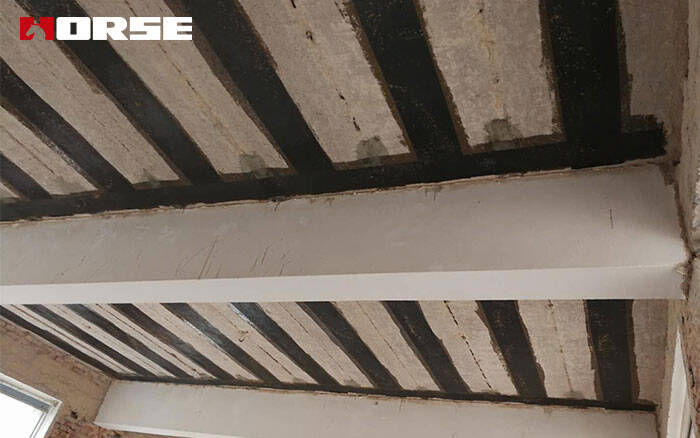Solutions
Horse Construction offers full range of structural strengthening materials with technical supports, documentation supports, products supports, project supports.
carbon fiber structural reinforcement!

1. The carbon fiber reinforced concrete structure has the advantages of light weight, high strength, corrosion resistance, small thermal expansion coefficient, good fatigue resistance, and efficient and convenient construction.
2. The carbon fiber structural reinforcement method is not suitable for the reinforcement of plain concrete and components with a lower reinforcement ratio than the current national standards. And the long-term use temperature should not be higher than 60 ℃, the measured concrete strength level of the reinforced member should not be lower than C15, and the positive tensile bond strength of the concrete should not be lower than 1.5 N/mm2.
3. The use of carbon fiber for the structural reinforcement of the normal section of the flexural members, the improvement of bearing capacity and the reduction of ductility are its two important characteristics. In the structural reinforcement design, structural measures and physical and mechanical quality testing of structural adhesives are used to prevent the peeling damage and adhesive layer damage of the carbon fiber and concrete interface, and the upper and lower limits of the relative compression zone height are used to limit the amount of carbon fiber. After the tensile steel bar yields, the carbon fiber strain basically reaches the design value and then the concrete is crushed and destroyed, the normal section bearing capacity calculation formula is used to prevent it.
4. The carbon fiber is used to reinforce the oblique section of the bending member, which mainly adopts two methods of closed wrapping or sticking u-shaped hoop. In the design of inclined section reinforcement, the shear reduction factor is introduced to consider the effect of the strip anchoring method and the form of force, and the design value of the carbon fiber tensile strength is reduced to a certain extent.

5. When carbon fiber is used to reinforce the compression member, the core concrete is constrained by carbon fiber and is in a three-way compression state for the axial compression column. It will effectively prevent the development of lateral deformation of core concrete and internal cracks, improve the compressive strength of concrete, and thus increase the bearing capacity of columns. But for the rectangular section column, due to the uneven distribution of the carbon fiber restraint stress, only part of the core concrete is restrained, and the restraint effect is much lower than that of the column. For large eccentric compression members, the anchoring of the column head and column bottom is more difficult. Therefore, the design should be cautious, anchor design should be done, if necessary, test verification.
6. The tensile members are reinforced with carbon fiber. For the closed tensile members, the overlapping and anchoring of the surrounding parts should be handled well. The square structure also needs to handle the corners. For tensile members such as web rods, the end anchoring should be done during the design, and if necessary, the end anchoring reliability test should be carried out.
7. The basic principle is the same as that of stirrup when using externally-bonded carbon fiber for seismic reinforcement.
You can find anything here you are in need of, have a trust trying on these products, you will find the big difference after that.

High strength carbon fiber reinforced polymer (CFRP) strip / laminate / plate for structural strengthening and concrete repair

High strength, unidirectional carbon fiber fabric pre-saturated to form a carbon fiber reinforced polymer (CFRP) fabric used to strengthen structural concrete elements.

High strength, unidirectional carbon fiber sheet pre-saturated to form a carbon fiber reinforced polymer (CFRP) sheet used to strengthen structural concrete elements.